|
Copyright © 2001-2016 Arthur John Huneke
ALL RIGHTS RESERVED
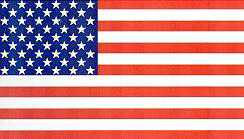
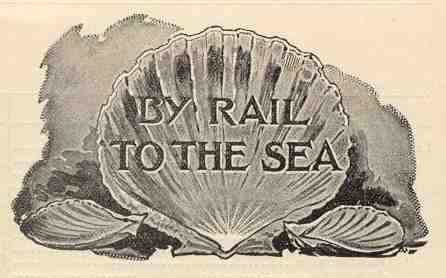
THE BABYLON RAILROAD COMPANY
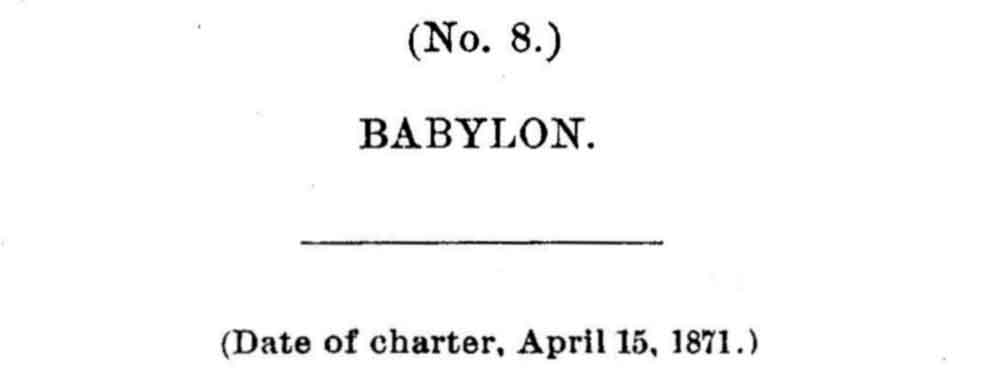
AN EXCERPT FROM "Long Island; a History of Two Great Counties, Nassau and Suffolk, Volume II" 1949
THE BABYLON RAILROAD WAS CHARTERED APRIL 15, 1871 TO
CONNECT THE STEAMBOAT DOCK WITH THE SOUTH SIDE RAILROAD,
A DISTANCE OF 1.53 MILES. IT HAD TWO PASSENGER CARS, ONE FREIGHT
CAR FOR CARRYING LUGGAGE AND PARCELS, AND TWO HORSES.

AT THE BOAT LANDING AND MANHATTAN HOTEL
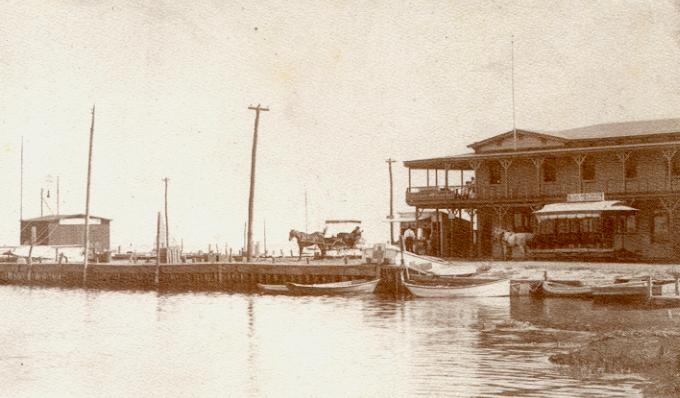
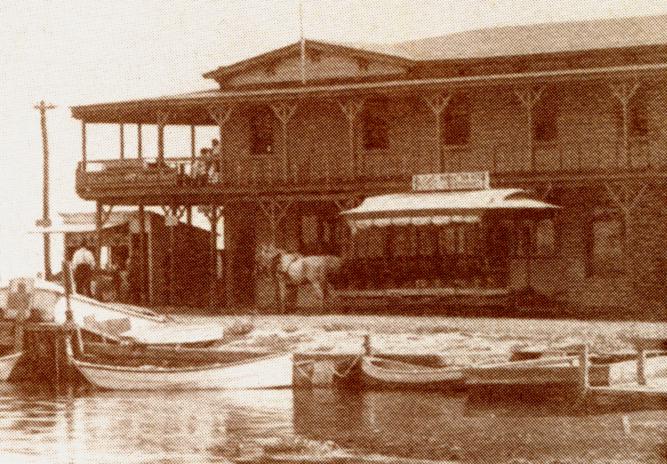
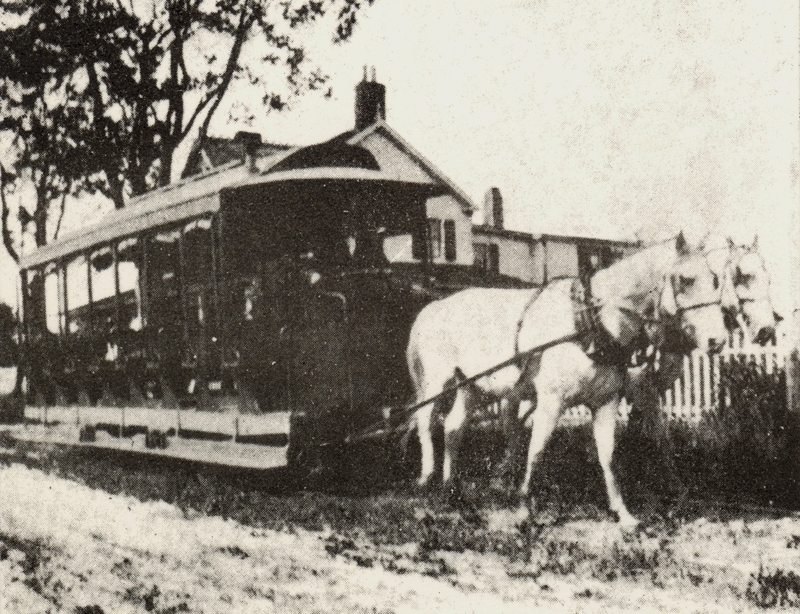
THE TRACK WAS LAID ALONG DEER PARK AVENUE AND FIRE ISLAND AVENUE.
CIRCA 1900 TROLLEY CARS WERE PURCHASED AND THE LINE WAS ELECTRIFIED.
DEER PARK AVENUE LOOKING SOUTH
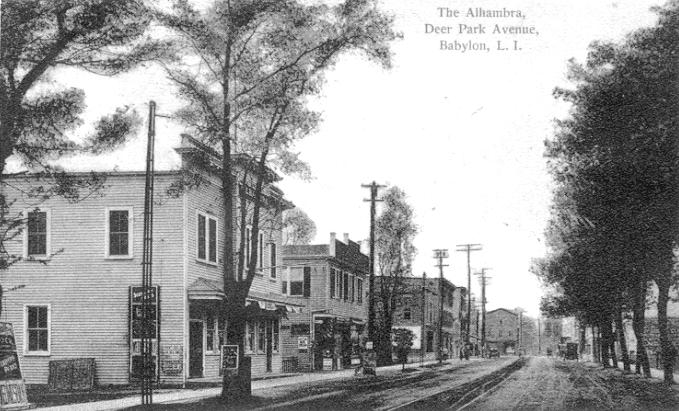
DEER PARK AVENUE LOOKING SOUTH
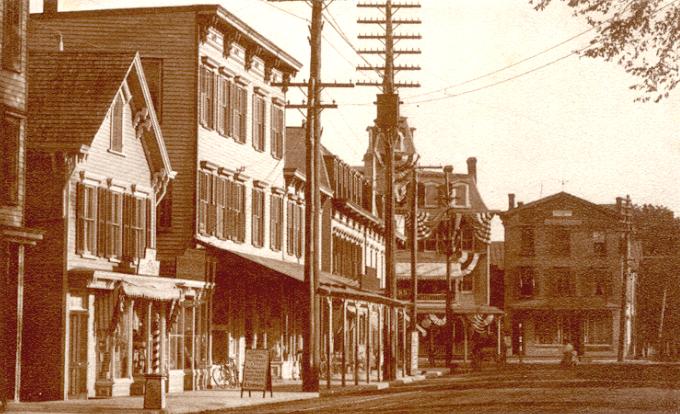
DEER PARK AVENUE LOOKING NORTH
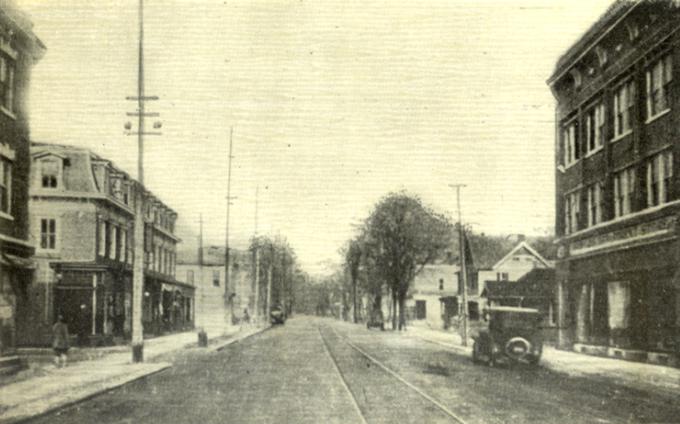
THIS R. P. POSTCARD SHOWS A BABYLON RAILROAD CAR
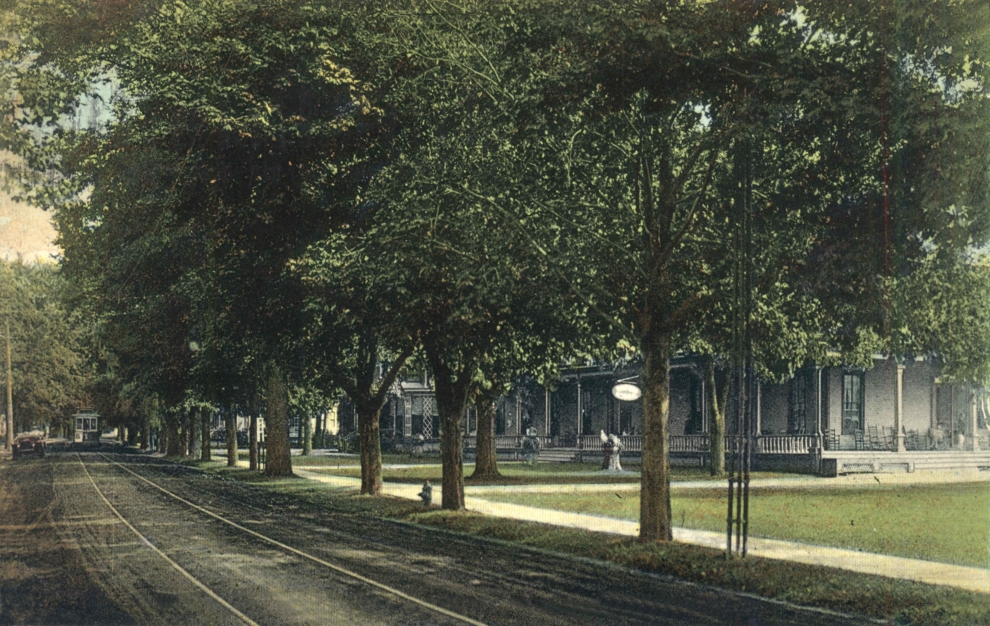
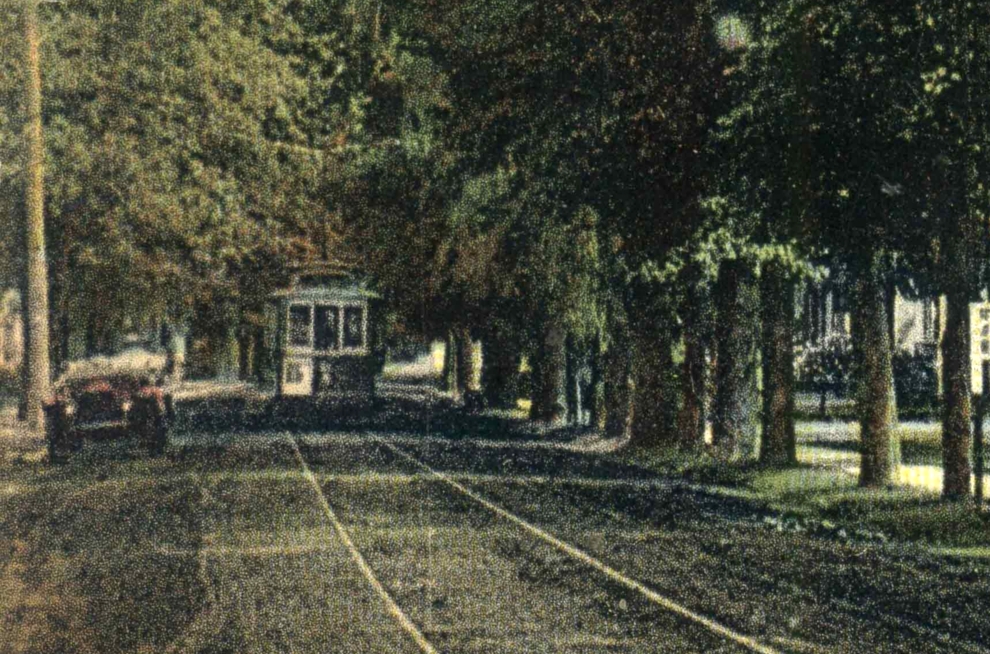
AT THE BOAT LANDING AND MANHATTAN HOTEL
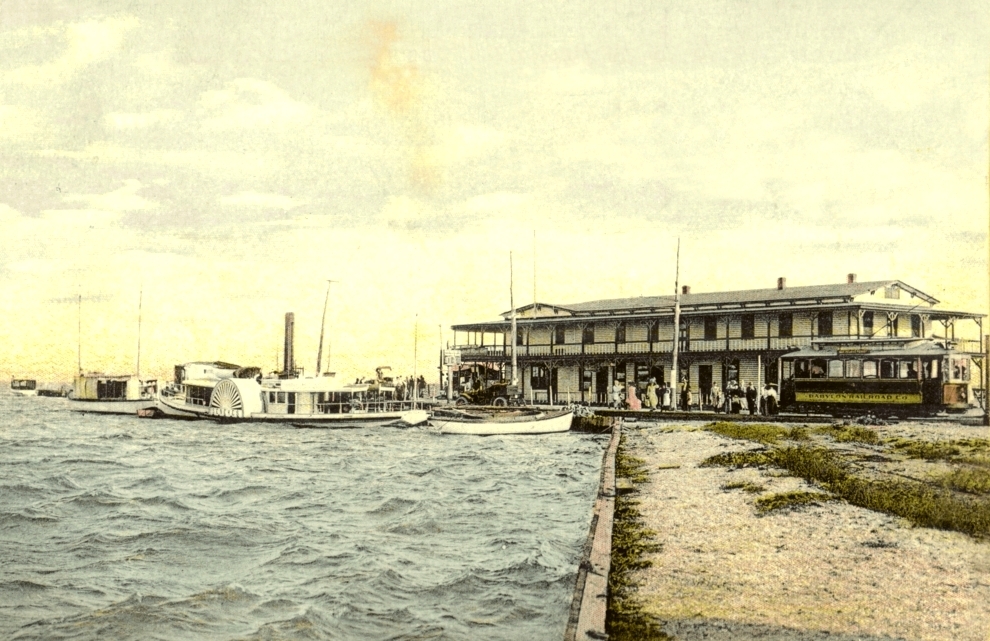
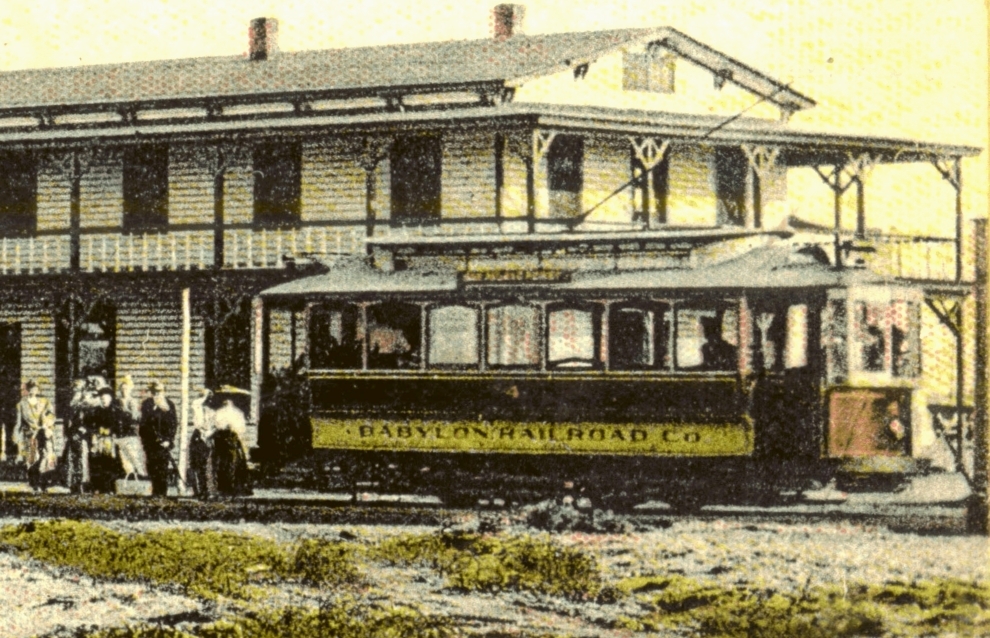
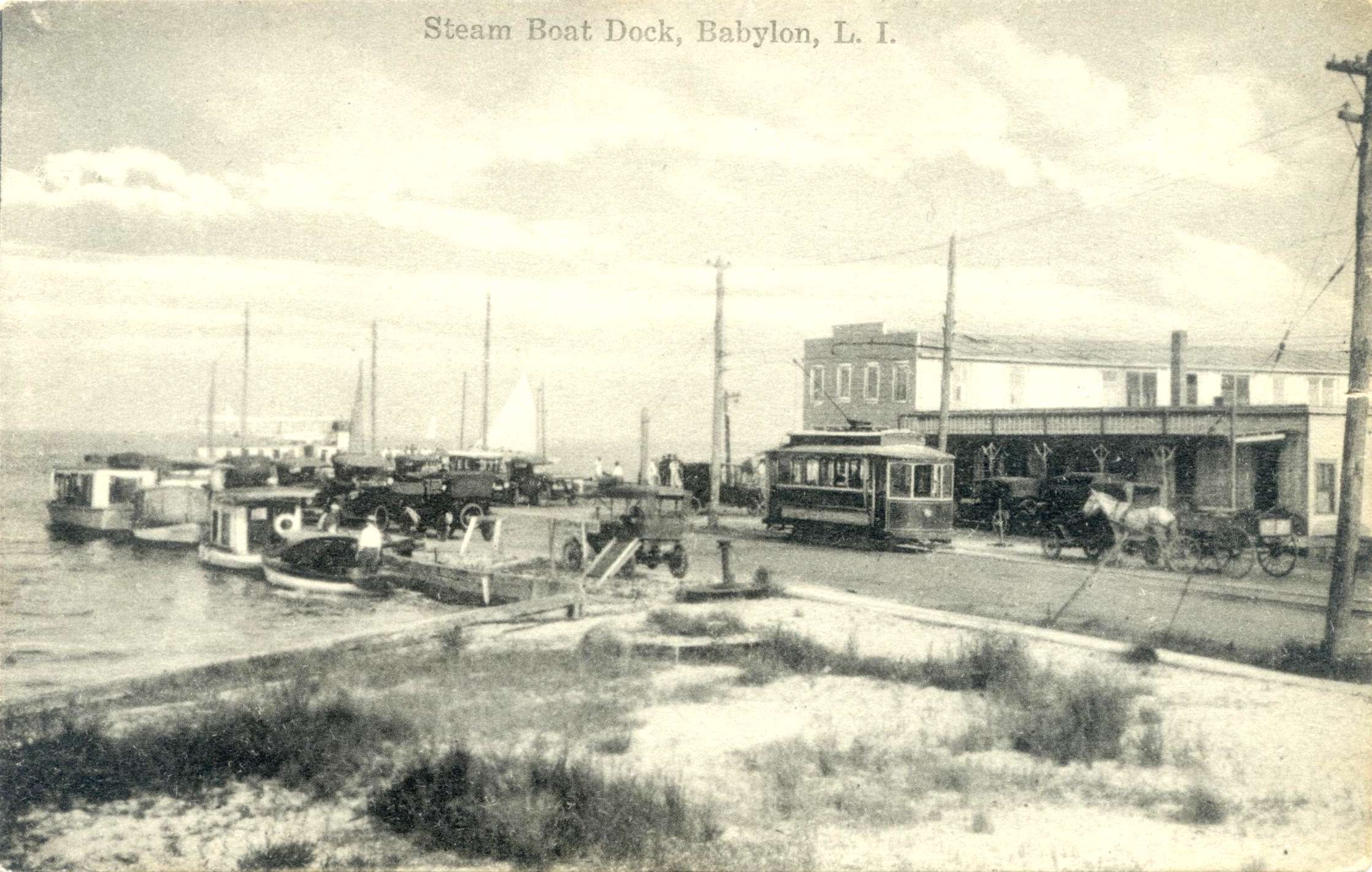
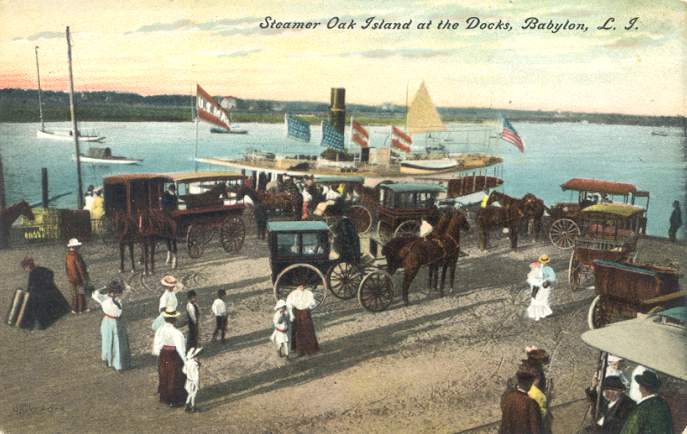
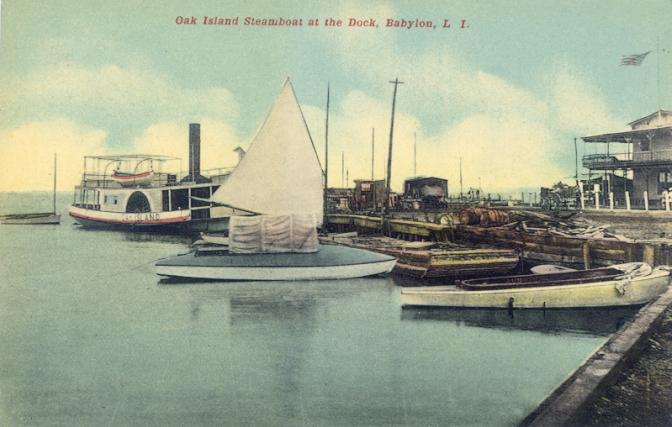
COLTON'S 1873 MAP ALSO SHOWS THE PROPOSED C.R.R.L.I. TERMINATING
AT THE DOCK AND SHOWS THE STEAMBOAT ROUTE AND FIRE ISLAND HOTELS.
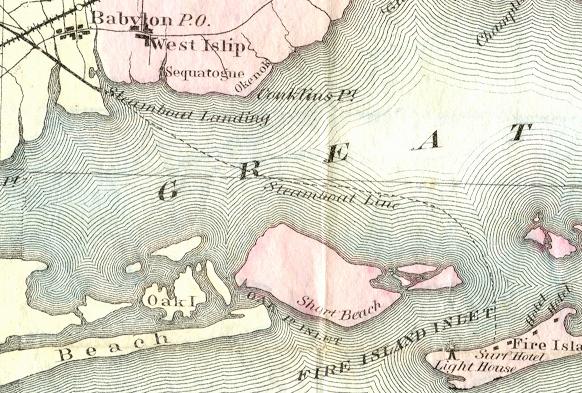
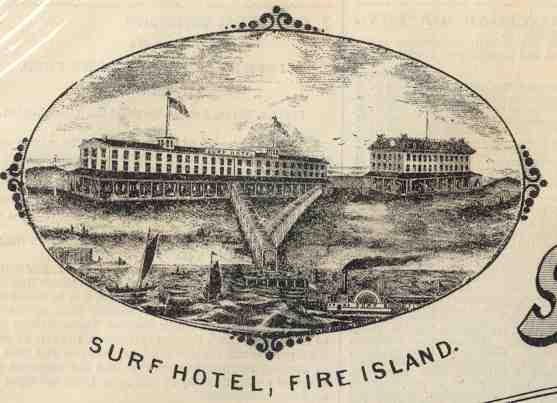
FROM BABYLON NEWSPAPER "SOUTH SIDE SIGNAL" AUGUST 11, 1869
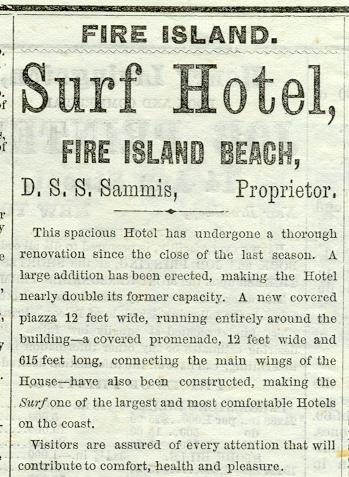
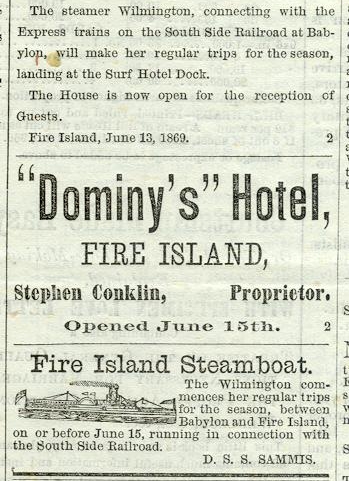
SOME DATA FROM THE 1873 REPORT TO THE STATE RAILROAD COMMISSION
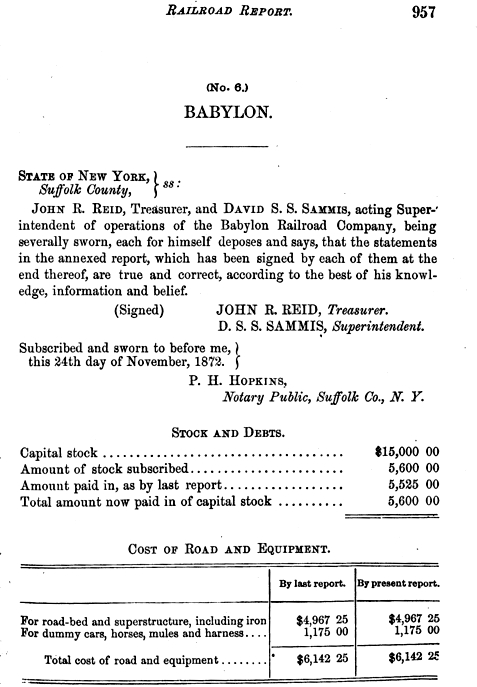
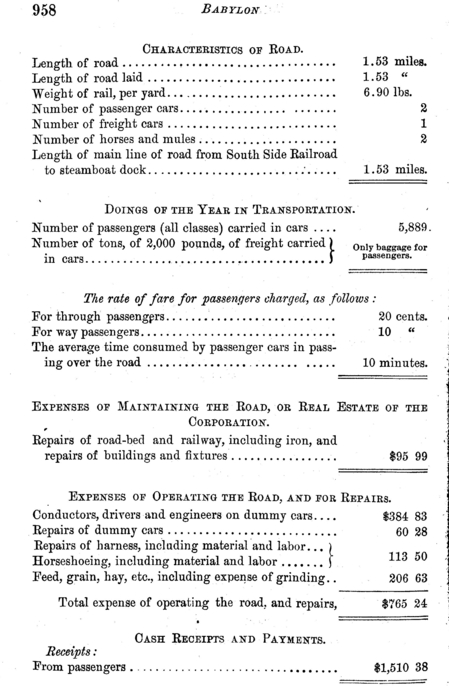
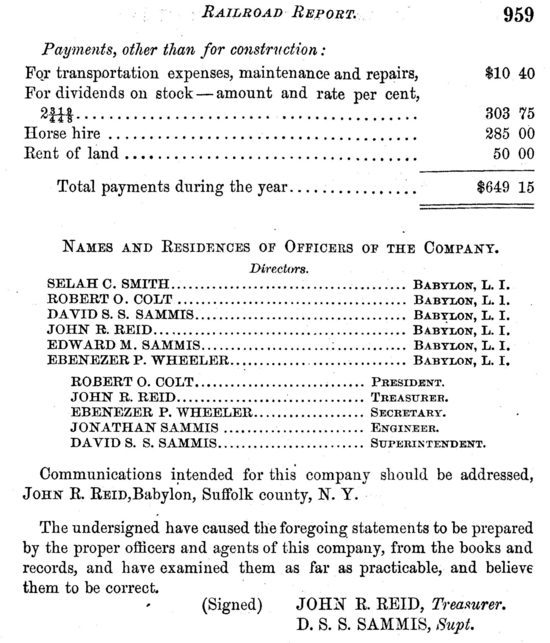









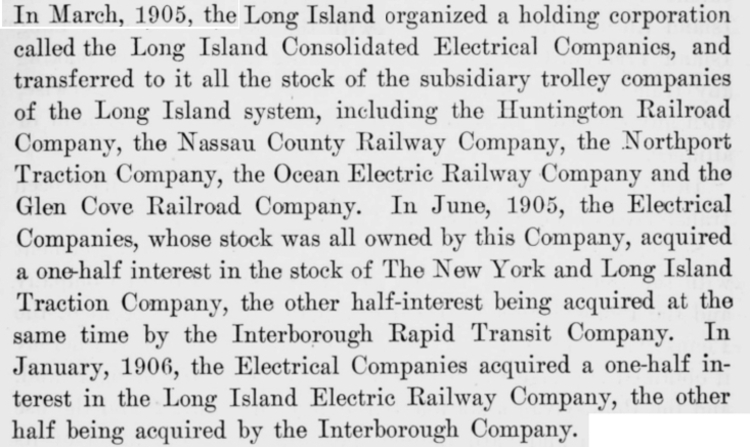

"ELECTRICAL WORLD" OF MAY 18 1907 REPORTED THAT
THE L.I.R.R. HAD PURCHASED THE BABYLON RAILROAD.
FROM THE DOCUMENTARY HISTORY BY THE STATE RAILROAD COMMISSION

IN 1910 THE BABYLON RAILROAD WAS EXTENDED WEST TO AMITYVILLE.
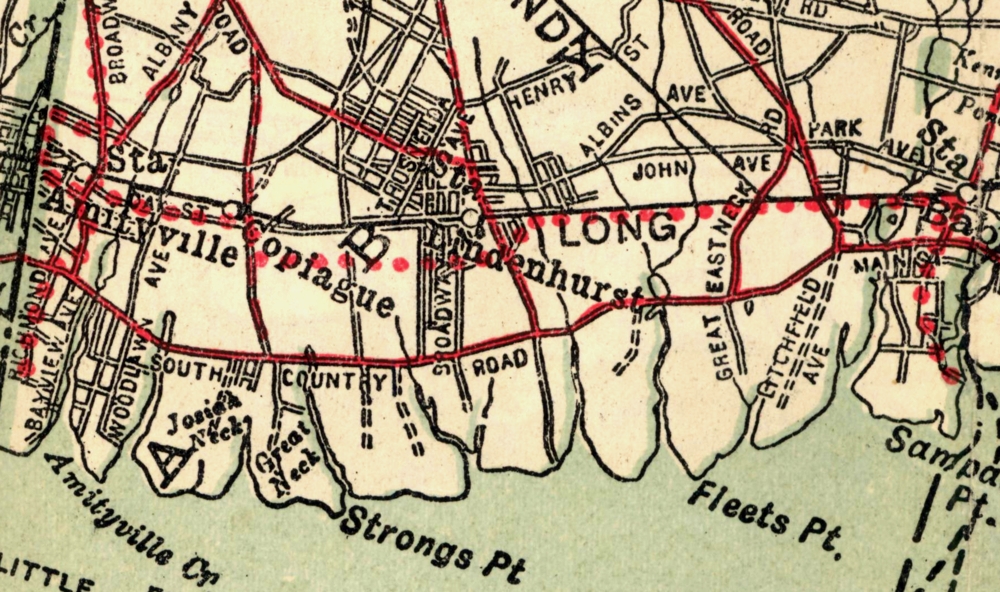
AN ED GLOEGGLER MAP FOR V.F. SEYFRIED'S "CROSS ISLAND TROLLEY"
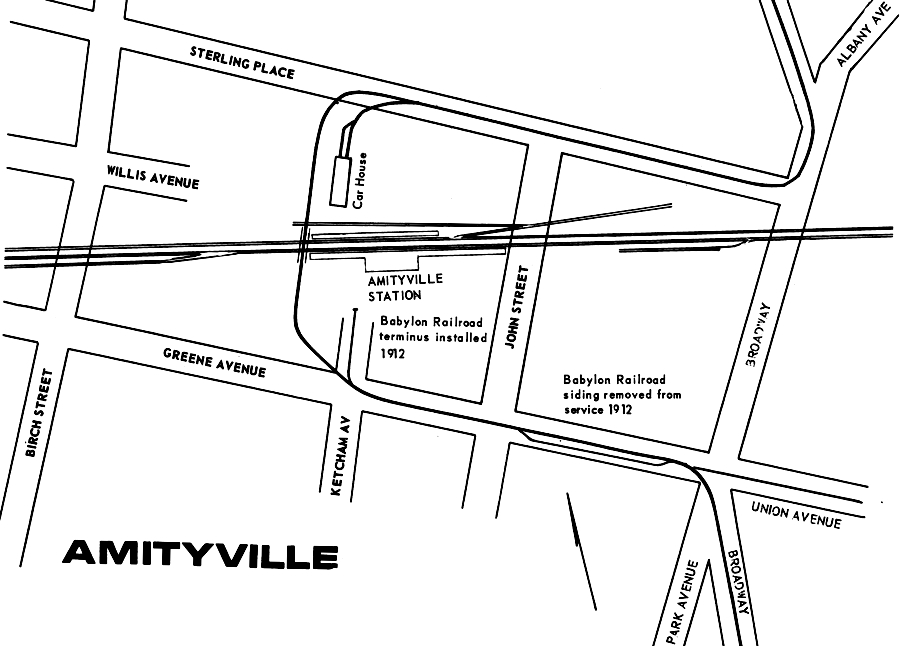
THE BABYLON RAILROAD 1912 TERMINUS
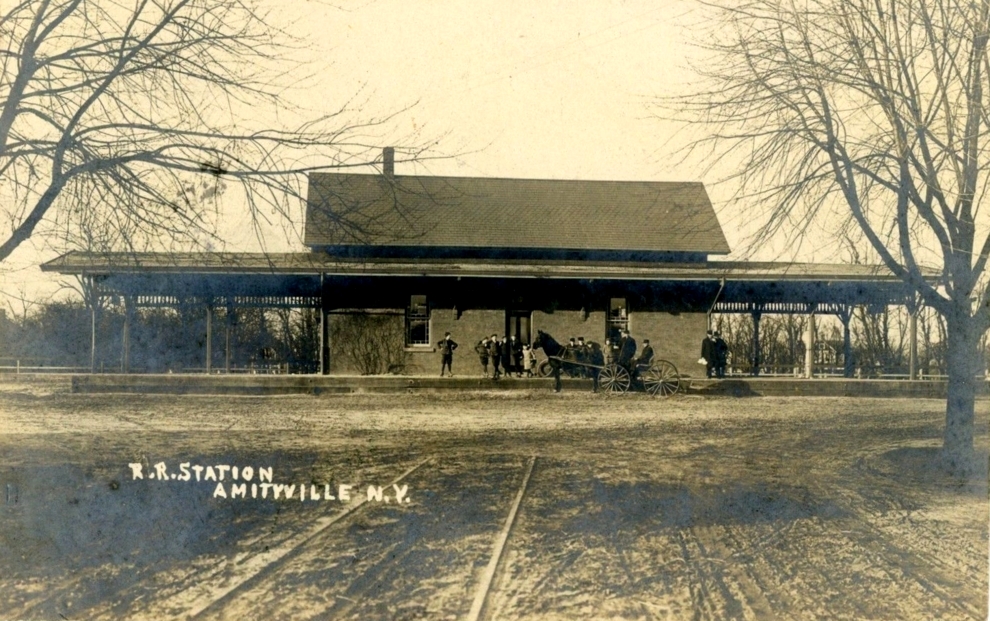
BABYLON RAILROAD YARD AND SHOP AT BELMONT JUNCTION
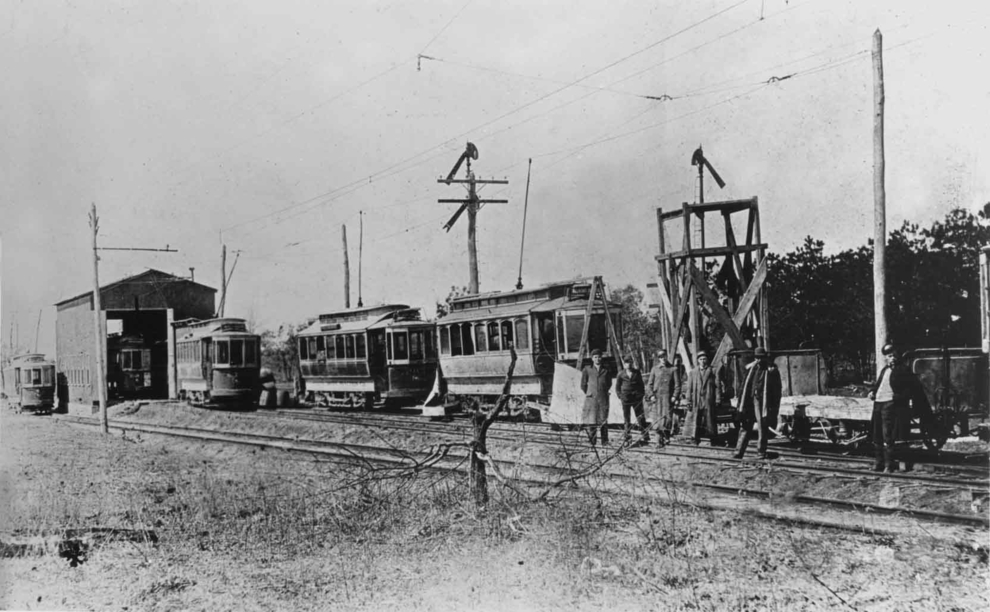
A BABYLON RAILROAD CAR AT COPIAGUE POST OFFICE
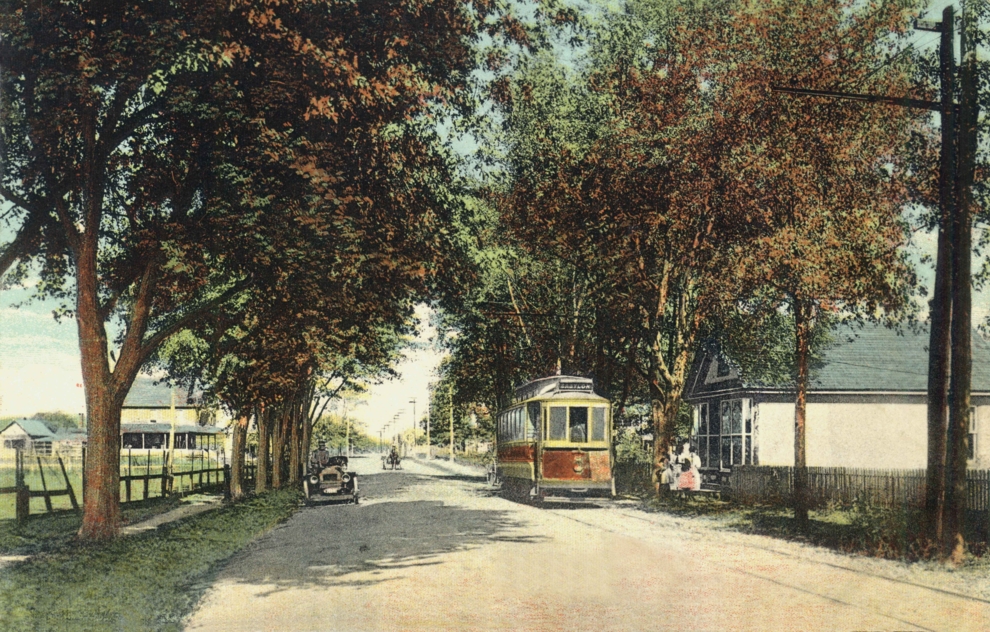
WIKIPEDIA STATES THAT THE LINE FROM BAYLON STATION TO THE FERRY DOCK CLOSED IN 1911.
IN 1920 THE AMITYVILLE LINE CLOSED.

AN EXCERPT FROM "Long Island; a History of Two Great Counties, Nassau and Suffolk, Volume II" 1949
| The Stewart Line of the Central Rail Road Company was opened August 1, 1873. Its route through the township was southeasterly from East Farmingdale to Fire Island Avenue, Babylon. At first the road connected with the Babylon Railroad Company, a horsecar line to Fire Island dock. The route was changed in 1876 by curving the roadbed at Belmont Junction (West Babylon) and joining the Stewart Line with the South Side Rail Road at that point. The Stewart Line was the location on June 30, 1899, of an interesting demonstration of human endurance. Charles Murphy, famous racing representative of the Kings County Wheelmen, rode a bicycle behind a locomotive and car of the Long Island Rail Road for the distance of one mile in 57 4/5 seconds of time. Boards were laid for a distance of over a mile between the rails on the Stewart Line beginning at Maywood, a former station at the Broad Hollow Road between Farmingdale and Babylon. On the rear of the railroad car was a specially constructed hood to protect the rider from pressure and wind eddies and under the rear platform was a miniature snow plow to sweep the boards clear of obstacles. The race began at 5:10 in the afternoon with official timers and referee riding on the observation platform and hundreds of spectators lining the tracks. At the conclusion of the race and just 200 yards from the end of the boarded tracks, Murphy and wheel were pulled aboard the observation car by three stalwart men. After a short rest “Mile a Minute Murphy”, as he was thereafter to be known, was pronounced none the worse for the physical exertion. In 1876, the Stewart Line, the Southern Rail Road (formerly the South Side Rail Road, which had changed control and name in 1874), and the central line of the Long Island Rail Road came under the one management of the latter company. The Long Island Rail Road, now a subsidiary of the Pennsylvania Rail Road, electrified its Montauk Division to Babylon in 1925. The Babylon Rail Road Company, chartered in 1871, operated a horsecar trolley line from the South Side Rail Road depot to Fire Island ferry dock in the village of Babylon. The company possessed one of the earliest trolley charters to be issued in New York State. The horsecar line was patronized once by Horace Greeley, New York newspaper publisher. While he was a passenger, the car ran off the track—a not too infrequent occurrence. Mr. Greeley alighted with others and assisted in lifting it back in place. A steam system of railway motive power supplied by a Kinetic motor supplanted the faithful horse in 1898. Seven years later the charter was amended to read “cars on said road shall be drawn by horses, mules or propelled by electric power”. The trolley, operated since 1871, had survived to greet the age of electricity. The Babylon Rail Road became a subsidiary of the South Shore Traction Company when an electric trolley line was opened on June 11, 1910, from the Amityville railroad depot through Copiague and Lindenhurst to the Babylon dock. The ferry service from Babylon to Oak Island Beach came under control of the same company and a round trip excursion between Amityville and Oak Beach via trolley and ferry was advertised at 40˘. In 1920, financial difficulties compelled the suspension of the township trolley system. The last trip was made on May 15, thus ending for all time trolley transportation within Babylon town. The trolley roadbed between the Babylon and Lindenhurst village lines was purchased by the town in 1928 and converted into a highway. |
THE BABYLON RAILROAD WAS CHARTERED APRIL 15, 1871 TO
CONNECT THE STEAMBOAT DOCK WITH THE SOUTH SIDE RAILROAD,
A DISTANCE OF 1.53 MILES. IT HAD TWO PASSENGER CARS, ONE FREIGHT
CAR FOR CARRYING LUGGAGE AND PARCELS, AND TWO HORSES.

AT THE BOAT LANDING AND MANHATTAN HOTEL


THE TRACK WAS LAID ALONG DEER PARK AVENUE AND FIRE ISLAND AVENUE.
CIRCA 1900 TROLLEY CARS WERE PURCHASED AND THE LINE WAS ELECTRIFIED.
DEER PARK AVENUE LOOKING SOUTH

DEER PARK AVENUE LOOKING SOUTH

DEER PARK AVENUE LOOKING NORTH

THIS R. P. POSTCARD SHOWS A BABYLON RAILROAD CAR


AT THE BOAT LANDING AND MANHATTAN HOTEL





COLTON'S 1873 MAP ALSO SHOWS THE PROPOSED C.R.R.L.I. TERMINATING
AT THE DOCK AND SHOWS THE STEAMBOAT ROUTE AND FIRE ISLAND HOTELS.


FROM BABYLON NEWSPAPER "SOUTH SIDE SIGNAL" AUGUST 11, 1869


SOME DATA FROM THE 1873 REPORT TO THE STATE RAILROAD COMMISSION












"ELECTRICAL WORLD" OF MAY 18 1907 REPORTED THAT
THE L.I.R.R. HAD PURCHASED THE BABYLON RAILROAD.
FROM THE DOCUMENTARY HISTORY BY THE STATE RAILROAD COMMISSION

IN 1910 THE BABYLON RAILROAD WAS EXTENDED WEST TO AMITYVILLE.

AN ED GLOEGGLER MAP FOR V.F. SEYFRIED'S "CROSS ISLAND TROLLEY"

THE BABYLON RAILROAD 1912 TERMINUS

BABYLON RAILROAD YARD AND SHOP AT BELMONT JUNCTION

A BABYLON RAILROAD CAR AT COPIAGUE POST OFFICE

WIKIPEDIA STATES THAT THE LINE FROM BAYLON STATION TO THE FERRY DOCK CLOSED IN 1911.
IN 1920 THE AMITYVILLE LINE CLOSED.